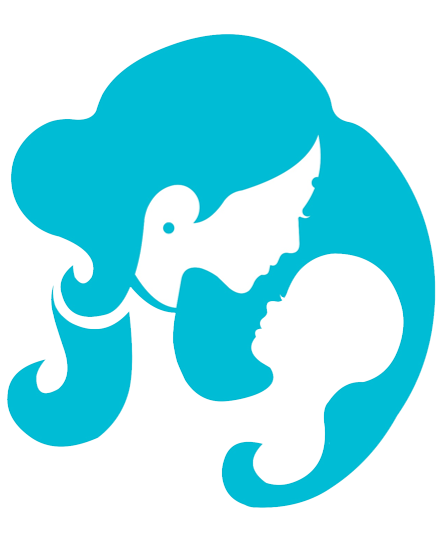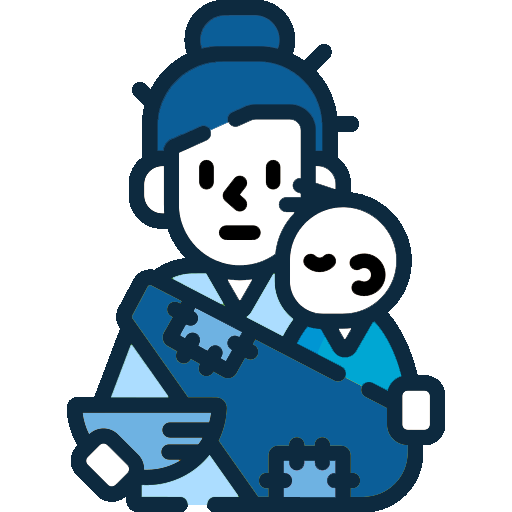MATERNAL & CHILD HEALTH

Riddhi Foundation has developed a number of web-enabled systems with GIS backbone for capturing real-time data on the service delivery towards pregnant woman and children. A pregnant woman is tracked from her conception up to the completion of her post-natal services, while tracking of each child is done from birth till the age of five years. Systems are developed with a combination of mobile telephony (using Android OS) and web-server based programs. The systems proved to be crucial in tracking the delivery of services throughout this period and sending alarms/alerts through mobile notifications to the health workers for delivery of timely services to mothers and children. The mother-child dyad systems aim to ensure Real Time, clean and validated data capturing. The objective is to minimize chances of missing out any health care or nutrition service to a mother or child. The ultimate goal is to reduce the incidences of morbidity, mortality and malnutrition.
The systems provide :
- Real-time data capturing through mobile telephony (using Android OS), voice, photograph, etc. Location and time are also captured automatically
- Uploading voice data to web-server (including offline data storing facility)
- Data management and analysis
- Dashboard
- Mobile based Alarm-Alert, 'To-do' reports for the ANMs and Medical Officers
- GIS (Geographic Information System) interface for identifying the most difficult to reach mother/child location
Projects taken up under Mother-Child
Dyad are
as follows :
- Combating Child Mortality, Morbidity and Malnutrition in Attappady Block of Kerala Using Mobile and GIS technology (Janani) [UNICEF & GoK]
- Tracking of Mother Child Dyad for First 1000 Days of Life for Dhupguri Block of Jalpaiguri and Ward 58 of Kolkata (1000 days) [CINI]
- Mother-Child Dyad Care System for Mandwih block of West Tripura (e-Janani) [District Administration]
NUTRITION

Riddhi Foundation has developed a number of web-enabled systems with GIS backbone for capturing real-time data on nutritional status of children on all the three parameters namely, weight for age, weight for height and height for age, from birth to five years of age. Our expertise extends from ICDS data flow system re-engineering to developing nutrition monitoring system using Information and Communication Technology (ICT) as well as developing Geographic Information Systems (GIS) for monitoring nutrition status of every child. The objective is to locate each child geographically and spatially display the incidence of malnutrition. The systems allow analysis up to every Anganwadi centre level and up to every Gram Panchayat level and present the same in thematic maps to bring into focus the areas of poorer performances. The systems provide, among other features, comparison of performances of Anganwadi centres with different social composition, which helps to identify any differential outcome based on the social context. The main purpose is to bring to notice the existence of any child before she/he enters into the arena of 'malnutrition' by highlighting all cases of growth faltering for taking corrective measures.
The systems provide :
- Real-time data capturing through Android mobile telephony, i.e. location, voice, photograph, etc.
- Uploading voice data to web-server (including offline data storing facility)
- Data validation
- Data management and analysis in all the three aspects of malnutrition along with displaying the results in WHO growth charts
- Dashboard
- Mobile based Alarm-Alert, 'To-do' reports for the ANMs and Medical Officers
- GIS (Geographic Information System) interface for identifying the most difficult to reach mother/child location in the PHC area
- Picture Gallery displaying all the children AWC-wise
- Single point data entry (AWC wise) in ICDS Project
- Collation of data for upper tier (Gram Panchayat, Sector, ICDS Project & District)
- Generation of pre-defined indicators & charts (AWC-wise for each Sector, Sector wise, Project wise and also District wise)
- Automatic generation of GoI MPR (78 columns)
- Analysis of MPR data with Geographic Information System (GIS)
- Generation of list of Malnourished children with location
- Tracking all under 5 children on certain specific indicators.
Projects taken up under Mother-Child
Dyad are
as follows :
- Combating Child Mortality, Morbidity and Malnutrition in Attappady block of Kerala using Mobile and GIS technology (Jatak) [UNICEF & GoK]
- Monitoring Weight & Height of individual child under West Tripura & Dhalai District (Jatak) [Social Welfare & Social Education Department]
- Nutrition Surveillance System for Dhalai district, Tripura [District Administration]
- Nutrition Monitoring System for West Tripura district [District Administration]
- Combating Malnutrition in children in disaster prone Patharpratima block of Sundarbans in West Bengal [TDH]
- Monitoring of malnutrition of children in Vaishali district, Bihar (I-CAN for children under 2 years of age) [UNICEF]
WASH (Water, Sanitation and Hygiene)

Riddhi Foundation has developed a system for monitoring and analysis of various performance indicators related to WASH. Another system has been developed for specifically monitoring the implementation of Swachh Bharat Abhiyan, which analyzes the monthly progress up to block level and display output in thematic maps. The systems also make analysis on achievements across different social categories. Demographic features and social composition of the areas are also available in different layers which allow comparing progress against social composition of the area as per census 2011 as one of the indicators. Thematic maps are generated for visualising the progress and hindrance spatially. An important feature of the system is to make the monitoring more evidence based, and thus the scope of work has been extended to GPs by developing an ICT based pilot system for Real Time monitoring of construction of individual toilets. Photographs and other attributes for each toilet are being captured on a real-time basis using Android run mobile phones. Mobile application and high resolution map for viewing objects up to household level have been developed to capture and display photographs/data on construction of IHHLs from the field on a real time basis.
Projects taken up under WASH
are as follows :
- Evidence Based Decision Making & Interventions for Improving WASH Performance for a Few Selected Districts of Maharashtra [UNICEF]
- Accelerating Access to Household Sanitation in the Aurangabad Division through Strengthened Monitoring by Evidence Based Performance Analysis and Building Institutional Capacities Poverty Alleviation [UNICEF]
Poverty Alleviation

MGNREGS is an important scheme for alleviation of rural poverty and has its own MIS for monitoring its implementation across states, districts, blocks and GPs. It involves developing a GIS for thematic representation of MGNREGS performance indicators and to make it accessible in the website. This component requires development of digital maps of all the districts, blocks and GPs and two such systems have been developed. One is to show performances across all states and all districts which is also linked to the NREGA website (www.nrega.nic.in) for viewing all spatial analyses. There is another system to view progress up to GP level, which was developed for Wayanad district of Kerala. The system requires preparation of notional digital maps of all the administrative units performances of which are to be analysed. RF has developed another system for capturing and tracking all the assets created under the MGNREGS. This component is technically more challenging in capturing geo-stamped photographs of all the assets and porting those in the GIS so that anyone can identify exact location and nature of assets created and can also view the important attributes of the assets created. This is a completely different system, which uses mobile phone with Android operating system, for capturing picture along with latitude and longitude of the place where the asset is located and the time when the photograph was taken.
Project taken up under Poverty
Alleviation are as
follows :
- Geo-informatics Based Monitoring of MGNREGS and geo-stamped asset picture acquisition on real time basis -Wayanad District of Kerala. [NIRD & GoK]
- State and district wise analyses of performances of MGNREGS for the country on a monthly basis. [NIRD]
Municipal Governance

Riddhi Foundation has capability of developing web enabled system with GIS backbone for easier planning and monitoring of municipal services. A system has been developed for English Bazar Municipality of Maldah district for displaying locations of various utilities like roads, important offices, schools, water bodies, ward boundaries, dumping ground, and some other important land marks and utilities, which the municipality collected using hand held GPS. Riddhi Foundation developed a web-enabled system for showing all the infrastructures and public utilities mentioned before. Picture and name of all Councillors showing their jurisdictions (ward boundaries) have been ported in the system.
Research & Studies

Riddhi Foundation has a team of expert professionals, headed by Dr. M. N. Roy, for conducting research on various socio-economic issues with specialization in the field of public health, nutrition, water and sanitation, poverty alleviation, local governance and on environment & biodiversity management. West Bengal State Biodiversity Board implemented the first Global Environment Facility (GEF) project, “Strengthening the implementation of the Biological Diversity Act and Rules with focus on its Access and Benefit Sharing Provisions” under the guidance of National Biodiversity Authority (NBA) with the support of United Nations Environment Program (UNEP) and the Ministry of Environment and Forest (MoEF), Government of India. Riddhi Foundation, in association with Business Brio conducted the study on tradable bio- resources of West Bengal for the State Biodiversity Board. The objective was to get an overview of various bio-resources of the state which are being traded by various bio-resource based industries (Like herbal industries, forest based industries, Agriculture based industries etc) in the state with special focus on those bio-resources which are not included in the “Normally traded Commodity List” as notified by Govt. of India under sction-40 of the Biological Diversity Act, 2002. Riddhi Foundation has identified and assessed the volumes of those bio-resources in West Bengal and their economic potential in order to promote their conservation, sustainable use and piloting ABS mechanism. Extensive field visits and surveys were conducted in all the districts of the state from the related sources. Primary data and secondary data have been collected, categorized and analysed critically to draw logical conclusion. The final report has been shared with the West Bengal State Biodiversity Board. Riddhi Foundation provides all sorts of consultancy for strengthening both rural and urban local governance and building capacity of Local Governments for better delivery of services, augmentation of own revenue and better fiscal management. One area of specialization is providing support for decentralized planning for the local areas and to assist local governments in developing their own database including spatial and temporal data for more objectivity in planning. RF also provides consultancy support for implementation of the plan and assessing its output and outcome. Presently, a study namely, Gram Panchayat Level Decentralized Planning in West Bengal: The Process, the Outcomes and the Sustainability, is being conducted by Riddhi Foundation in association with NIRD&PR with the aim of reviewing the process of decentralized planning in the state of West Bengal. This study aims at generating field data to review the decentralized planning process at the GP level. The study will help to come out with policy issues for institutionalizing planning processes and how the same can be initiated and sustained in other parts of the country. Another research work (Mapping Access to Health Services, Patharpratima block of Sundarbans) had been taken up by the Future Health System (FHS) to study the various aspects of delivery of health services in Patharpratima block of South 24 Parganas, one of the blocks within Sundarbans. Riddhi Foundation had provided Geographic Information System (GIS) based system for carrying out the research project, particularly the spatial and geographic aspects of the access. The system captured location of various health and related facilities along with services provided from those facilities, location of the habitation, existing transport services including water transport and natural barriers to transportation because of presence of large number of rivers and creeks and isolated islands within the Block. The GIS helped to understand the spatial gap in access to healthcare services to help formulation of appropriate policy in reaching healthcare services to the people living in those areas.
Designing & Developing Web-based Survey & Data Capturing System

Riddhi Foundation has capability of designing and developing various web-based systems for data capturing, displaying the outcomes through dashboard and mobile applications for capturing data and showing the analyses on the dashboard. Mobile telephony can be used for conducting field survey for faster capturing and analysis of data. Most of the projects undertaken by RF are based on this framework. One of the ongoing projects in this field is the designing and development of a web-based data entry module for compilation of responses to questionnaire of the 5th Bihar SFC to the Panchayats of the state. The 5th SFC has decided to develop web-enabled questionnaires which will be accessed through internet by the local governments and enter relevant information on their functioning. In this mode it will be lot easier and faster to compile the answers of the questionnaires and the same will also have lesser chances of errors. Five different web enabled questionnaires have been developed for that purpose. Under the Rural Module, there are four questionnaires related to functioning of Gram Kachari, Gram Panchayats, Panchayat Samiti and Zilla Parishads. Apart from the rural local bodies, a fifth Module for urban local bodies has been developed. Most of the questions can be answered by selecting from options given in the drop down menu. Riddhi Foundation has been entrusted with the responsibility of development of the web enabled data entry system, which is nearing completion. Riddhi Foundation is also in the process of developing a system for capturing various attributes of ground water and the depth of the water table at certain fixed locations in Sundarbans over a long period. This is being done for Vivekananda Institute of Biotechnology, Nimpeeth. [Studies on the effects of ingression of sea water in selected 56 villages of the Sunderbans of West Bengal,